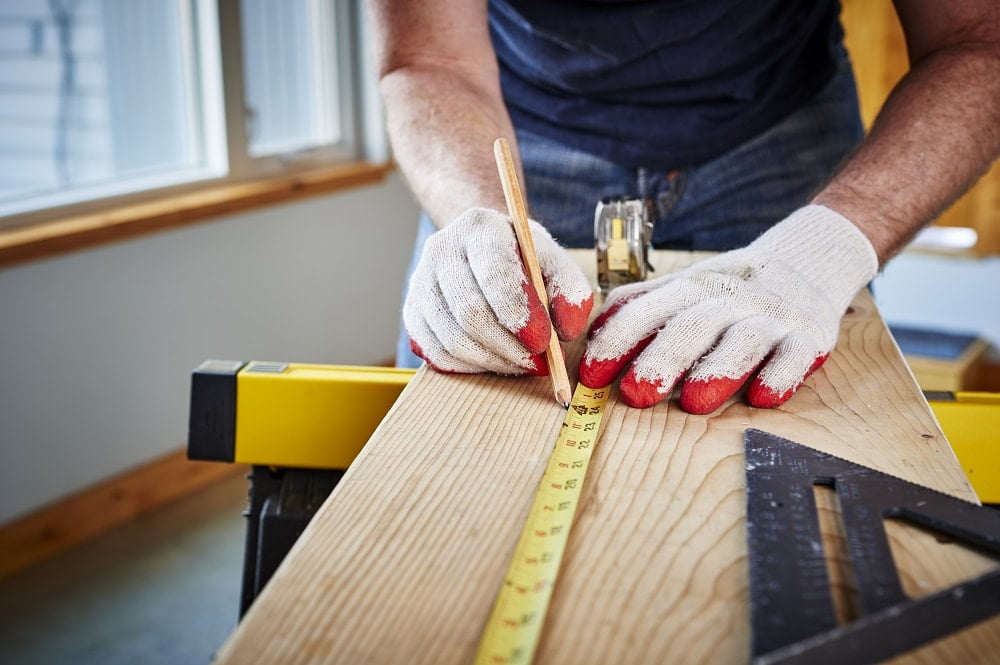Introduction
Woodworking projects are a great way to express yourself through creativity and craftsmanship. Working with wood can also be an enjoyable way to make money, either by selling your finished products or taking on new client contracts. To help ensure that you get paid for the work you do, accurate billing is essential.
Accurate billing should include all of the materials used in the production process, as well as any costs incurred while completing the project such as labor charges or special equipment rental fees. In addition to these cost factors, pricing should also reflect both the time and effort taken to create each unique product. By charging a fair rate for all woodworking services rendered, you can ensure that your hard work is respected and properly compensated.
The benefits of accurate billing go beyond ensuring a fairer wage for your efforts; it can also help protect clients in case issues arise with a particular project. If something does not come out quite right due to an unexpected factor out of one’s control, it helps to have clear communications regarding what was already agreed upon prior to commencement. It also helps when changes need to be made later down the line due to circumstances not accounted for during the initial conception phase – accurate billing gives clarity on what can and cannot be done within certain limitations of time, cost and material availability before hand so that everyone involved knows what they will be getting into from the beginning. This reduces potential misunderstandings or frustration further down the line when things don’t necessarily turn out as planned or expected initially.
As such, it is key that one puts forth best effort into accurately billing their woodworking projects so that everybody involved starts off on best footing possible without too much confusion or ambiguity about how payment will ultimately be decided upon once all is said and done at completion of job!
Types of Woodworking Projects
Woodworking projects can vary greatly in complexity and scope, ranging from basic furniture repair to the creation of large-scale structures like barns and houses. A professional woodworker must know and understand the various types of woodworking projects they may take on and evaluate each project for potential profit or loss. Understanding the following types of woodworking projects is essential for success:
• Repair Projects: These are typically the simplest type of project that requires minimal effort to complete, usually involving patching or refurbishing existing pieces. Common tasks may include replacing broken slats, securing loose fixtures, and adding minor decorative touches such as carving details. repairs can also be done with both hand tools or power tools. Potential profits from these type of projects are usually limited as they generally involve smaller amounts of material cost, labor costs, etc., however a well-executed repair job can be quite lucrative.
• Custom Furniture Pieces: Clients may require small-batch production pieces that require more detail work than a typical repair job. Their expectations might range from a simple plywood bookshelf to an intricately designed headboard featuring brass accents or inlaid patterns. Depending on the level of craftsmanship required, profits margins on this kind of project will vary widely if one is properly factoring in materials costs along with time required to complete it.
• Large Structures: These kind of projects often have defined scope so it’s important that a woodworker understands what they’re taking on before committing time and resources into it. This could involve anything from renovating an existing structure to creating one from scratch such as building a deck or outbuilding using SIPs panels, trusses, etc. This type of project may require significant investments in heavy machinery (e.g., cranes), specialized labor forces (e.g., electricians), large amounts of materials (e.g., lumber & hardware). Failure to properly estimate all possible material costs before entering a contract could lead to substantial losses down the line if budget overruns occur due either unexpected issues during construction or misestimation on part aloof the business owner/contractor when putting together their bid package for lower competitive bids against other firms vying for this same 1858·188·
Estimating Materials Costs
Accurately estimating the cost of materials for a woodworking project can be challenging. There are several factors to consider when budgeting for materials, including lumber type and size, hardware, adhesives, stains and other applicable finishes. Additionally, some of the costs may vary based on seasonality or availability.
When estimating the total cost of materials for a project, it’s important to use your supplier’s current pricing as a reference point. Make sure to check for any discounts that might be available to you if you order large quantities or are part of their regular customer program. Take into account any special requirements for the project that might incur additional fees and double-check everything before ordering from your supplier.
Once costs are accurately estimated and confirmed, add in margins for any miscues or modifications as they often occur during a project. This way it can be accounted for in the final bill without compromising quality or busting your labor budget. Finally, it is recommended that you review all invoices associated with the project before final billing so that you can validate accuracy and make sure all applicable taxes have been included in the total decision rate price.
Calculating Labor Costs
When calculating labor costs for woodworking projects, it is important to consider the time and effort required for each project. Before starting a woodworking project, determine the type of wood that will be used, what tools are needed and how much time will be taken to complete it. You should base your labor costs on the estimated number of hours it will take you to finish the project. To calculate the time accurately, track the hours you have worked on similar projects in the past and use that as a reference. If you are unable to estimate how long a particular project may take, break it down into smaller tasks and estimate how long each task will take. This will give you an accurate accounting of what this particular job requires in terms of labor and can help you decide if a better alternative exists. Additionally, when calculating labor costs, remember to account for any materials or additional products needed that may increase your overall expenses.
Calculating Time on Project
When it comes to the art of woodworking, accurately pricing your projects based on time can often be a tricky business. To achieve success in this area, it is important to come up with an effective system for calculating and billing each job accordingly. An excellent starting point involves jotting down notes related to every part of the project from start to finish. This process should begin with specific details about material costs and labor times associated with each task that needs to be completed. Keeping track of your working hours along the way will give you vital insight into how long the project should take you, allowing for more accurate pricing during the billing process.
In addition, it is wise to include a list of expectations that must be met prior to payment upon completing a job. For larger scale endeavors, breaking things down into several milestone payments can also provide both parties with some added security and peace of mind throughout the woodworking process. The exact format may vary depending on individual preferences and agreements between client and contractor, but this extra restriction helps ensure that projects are priced fairly and completed successfully before the next installment is due. Overall, proper planning ahead of time and careful consideration throughout the duration of any woodworking contract can help keep costs under control while minimizing misunderstandings or disagreements down the line.
Crafting a Project Proposal
The key to billing woodworking projects is to have a comprehensive and thoroughly thought out project proposal that properly represents the project details and also sells the client on paying for it. To get great results, there are certain steps you should take when creating this document. If a potential client requests one, make sure you include an itemized expense list with a break down of each element that comes into play when calculating the total cost of the job. This will help the client understand why they need to pay what they do and they can easily refer back to it as needed. Additionally, provide them with an overview of what will be happening in terms of labor, materials and timeline so that expectations are met on both sides. Once everything is agreed upon, always make sure to draft a contract between you two so that both parties understand their obligations. A strong project proposal should inform the customer about everything from wood types to design principles that might be needed, as well as any leading industry trends or techniques in the world of woodworking. Doing all this upfront is essential so that the start of your relationship is based on trust and respect.
Presenting Billing to Client
When you’re ready to present the bill to your client, it’s important to make it easy for them to understand. Begin by putting together all the details and calculations of the project, including materials used, hours worked and any other costs associated with the service.
Organize the information clearly and concisely on a professionally-formatted invoice, using software or an app designed specifically for invoicing. Be sure that the invoice is comprehensive and includes your business’s name, contact information, payment terms (including accepted payment methods), and prices stated in clear language”avoiding excessive jargon.
Include a breakdown of each cost individually so that your client isn’t confused about why they are paying for different elements. If applicable, include relevant taxes and describe when those taxes will be paid based on local regulations. Clearly indicate when payment is due and which late fees would apply if payment isn’t completed on time. Consider providing an online payment link through PayPal or another online platform so that payments can be made conveniently.
Finally, don’t forget to thank your customer for their business! Whether you choose to extend this sentiment via email or over the phone while presenting them with the invoice, being sincerely grateful can go a long way in developing lasting relationships with your woodworking customers.
Ensuring the Best Outcome
When it comes to billing for woodworking projects, there are several ways you can ensure that the best outcome is achieved for your client. First, make sure that you are clearly communicating with them about their expectations for the project before you start any work. This includes asking detailed questions about what they want from the project and specific details regarding material specifications, size requirements, or any additional elements or features. You should also be covering all of your procedures and policies in great detail with the client, so they know exactly what they will be receiving when it is finished.
Second, bill your clients upfront. This ensures that payment is guaranteed prior to commencing any work and this can help reduce any conflicts arising down the road if something is not done according to the original agreement.
Thirdly, make sure that both parties have signed off on a complete set of plans outlining each step of the project and detailing what will be included as part of the final cost. By having everything outlined prior to construction beginning, there won’t be any surprises down the line and this will help keep things smooth for everyone involved.
Finally, keep comprehensive records throughout each step of the process. From measurements taken during construction to re-finishing details after completion – document every aspect with notes, photographs or sketches in order to better understand why certain decisions were ultimately made and what changes may need to be altered going forward if necessary.
Best Tips and Advice
When billing woodworking projects, it is important to consider the size and complexity of the project. A large complex project may require more time and effort than a relatively simple one. Additionally, certain tasks may take longer to complete if there is specific customization requested by the client in terms of design or selection of materials. Additionally, look out for any extra expenses such as shipping costs or other material related charges that need to be passed on to the client.
Pricing should also be considered carefully when billing woodworking projects. Prices should be reflective of both labor and materials required, as well as any fees incurred (if applicable). It is valuable to research local industry standards in order to get an approximation of what is fair for each given job. Make sure you have a contract outlining all aspects of the project, including pricing, deadlines and payment terms so that everyone can agree upon expectations from the start.
Lastly, communication will help you ensure accurate billing when it comes to woodworking projects. Keeping your clients informed on progress updates helps them stay engaged with the project which should prevent any surprises at the end when it’s time to bill for the work. Additionally, ask questions up front about any unique requests or special considerations before beginning a job so that both parties are clear on what needs to be done and how much it will cost before work begins.
Further Resources
When billing for a woodworking project, it is important to consider the labor, materials and total costs associated. Labor should include an itemized list of the tasks performed, hours worked, and charge per hour. Materials should be broken down into items like lumber/finished goods, hardware, stains/paints, finishes, tools and other miscellaneous items needed. In addition to listing what materials are required for a job there should also be a cost associated with each. The total cost needs to include both labor and materials along with any additional or unforeseen expenses that may arise during the project.
For further resources regarding billing woodworking projects there are several helpful links available on the Internet. Some of these are Woodnet (www.woodnet.org) which has compiled information from various sources all in one spot; Lumberjocks (www.lumberjocks.com) which provides helpful tips on getting started in woodworking; Woodshopcowboy (www.woodshopcowboy.com) which offers dozens of tutorials for completing projects; FineWoodworking (www.finewoodworking.com) which features videos and informational articles related to woodworking projects; Ask The Builder ( http://www.askthebuilder.com) which sees questions from carpenters about issues like pricing: estimating & bidding; and Invisijig ( www .invisijig .com ) which offers detailed plans for making jigs for your shop using detailed illustrations / schematics and step by step guidance for each phase of the jig-building process . Each of these sites provide valuable insights into planning, estimating and ultimately billing woodworking projects successfully!

Hi everyone! I’m a woodworker and blogger, and this is my woodworking blog. In my blog, I share tips and tricks for woodworkers of all skill levels, as well as project ideas that you can try yourself.





